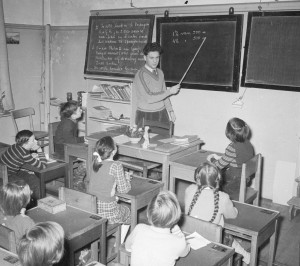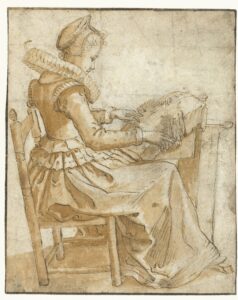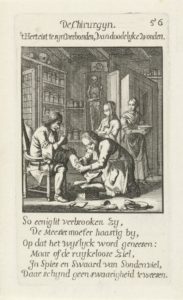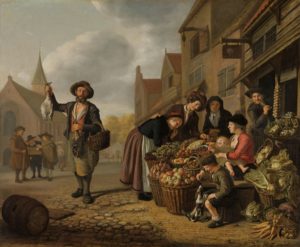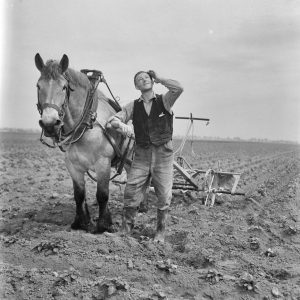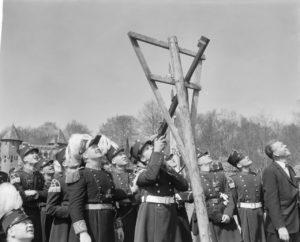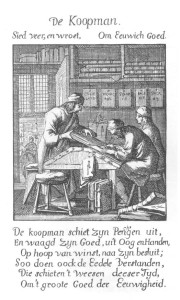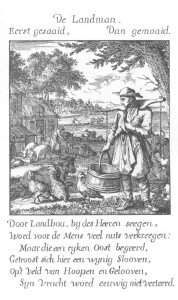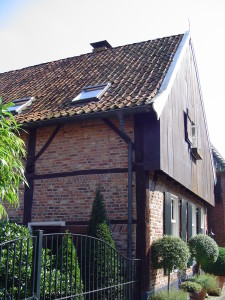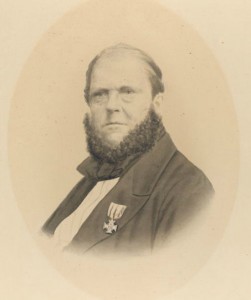An onderwijzer was a teacher at a primary school. Appointments of teachers of public schools can often be found in the municipal administration or town records. Appointments of teachers of religious schools can often be found in the records of the church. … [Read more...]
Dutch term – Kantklossen
Kantklossen is the art of making bobbin lace. It is made by twisting threads using bobbins. Pins hold the lace in place while it is being made. Bobbin lace took a lot of time to create and was expensive. Having clothes with bobbin lace was a sign of wealth and can be seen in many paintings and inventories of richer people. … [Read more...]
Dutch term – Chirurgijn
A chirurgijn is a barber or surgeon. In most towns most of the minor ailments were treated by a chirurgijn rather than a doctor with an academic educations. Chirurgijns learned their trade as apprentices. Larger cities had chirurgijnsgildes or surgeon guilds, that regulated entry to the trade and oversaw apprenticeships and master exams. Treatments provided by chirurgijns included blood letting, treatments of sores and skin conditions, and setting broken bones. They were also barbers who … [Read more...]
How to Find Your Dutch Ancestor’s Occupation
Do you want to know what your Dutch ancestor did for a living? Here are five different sources you can check to find out. Civil registration records The civil registration records of birth, marriage, and death will include the occupation of the adults in the records (parents, spouses, deceased). These records are available for the whole country since 1811, and since 1794/6 for parts of Limburg and Zeeland. Most of these records can be found online. Census records and population … [Read more...]
Dutch term – Pachter
A pachter is a tenant. Most farmers in the Netherlands were tenants who did not own their farms or land. You can sometimes find tenancy contracts in court records, notarial records, or family archives. Especially in earlier times, these contracts were often made without having an official record so it may be hard to find proof. See an example of two tenancy contracts from the 1700s. … [Read more...]
Quick tip – What Organizations Was Your Ancestor Involved in?
In the 1800s and 1900s, there were many organizations for every aspect of a person's life. Here are some examples I encountered in my research projects: Honorary member of the Society for the Promotion of the Musical Arts. Chairman of a local branch of the Anti-Revolutionaire Partij [Anti Revolutionary Party], a Christian political party. Deacon of the Dutch Reformed Church. Secretary of the Teacher's Association. Guardian of the Weavers' Guild. Director of the … [Read more...]
Dutch term – Koopman
A koopman was a merchant, with the plural being kooplieden. Kooplieden could trade in all sorts of goods, ranging from spices from the Far East, timber from the Baltic or fur from the Americas. Others traded in domestic products like grain, cloth or glassware. One of the nice things about having a koopman in your tree is that they left much more records than the average person: purchase contracts, partnership agreements, declarations of debts, powers of attorney and a range of other … [Read more...]
Dutch term – Landbouwer
A landbouwer is a farmer. There are several related terms that you may encounter in the records: Boer (farmer) Boerenknecht (farm hand) Landgebruiker (literally: land user, often a tenant farmer) Landman (farmer) Bouwman (farmer) Akkerbouwer (field farmer) Veehouder (cattle holder) Varkenshouder (pig holder) Graanboer (grain farmer) Most farmers did not own the farms they worked on. Many were tenants. Originally, their rent would have been a percentage of the yield, … [Read more...]
Dutch term – Timmerman
A timmerman is a carpenter. In the days before all houses were made of concrete or brick, carpenters built the frames. In the Middle Ages, most houses were made of wood. The houses had timber frames filled up with wicker and mud/clay. Later, bricks were used to fill in the timbers. Many carpenters were also employed to build ships. In the 17th century, the Russian Czar Peter the Great came to Zaandam to be apprenticed as a shipwright. … [Read more...]
Dutch term: burgemeester
The term burgemeester means 'mayor'. Before 1795, when the French occupied the Netherlands and introduced new laws, most towns had more than one mayor. These were elected officials. Since 1795, each municipality only has one mayor. Mayors are appointed by the crown. In early records of the civil registration, it is not unusual for a mayor of a small town to act as the clerk registering the births, marriages and deaths in the civil registration records. … [Read more...]
